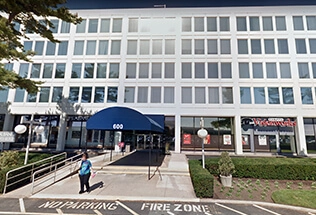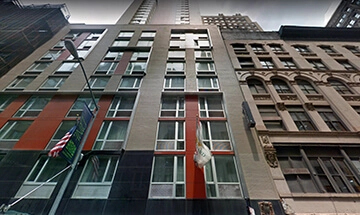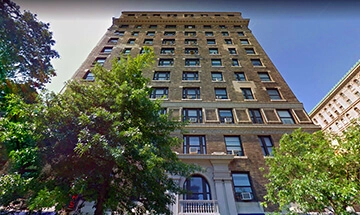If you’re involved in a legal proceeding, it’s understandable to be concerned about the possibility of encountering a judge who may be unfair or biased. Such concerns can create significant challenges and undermine the credibility of the entire process.
When impartiality is in question, it raises serious doubts about the legitimacy of the proceedings and the fairness of the outcomes for all parties involved. And so, if you or a loved one finds yourself facing an unfair judge, you may be wondering, “Can a judge be removed from a case?”
The answer? It depends.
For personalized answers to questions specific to you, contact the experienced New York State construction accident attorneys at Schwartzapfel Lawyers at 516-342-2200 or schedule your free consultation online today. If, however, you’d rather learn more on the subject first, please continue reading.
What Is The History Of Removing Judges?
The ability to remove a judge from their post dates back to America’s founding. Article III of the U.S. Constitution lays out the rules that govern Supreme Court justices, federal court judges, and district court judges. Among these rules and protections are guidelines for their removal from judicial office.
According to federal law, Article III judges can only be removed via Congress. More specifically, they must be impeached by the House of Representatives through a simple majority vote and then convicted by the U.S. Senate in a two-thirds majority vote.
While this process makes their removal rare, it is not unprecedented. For example, in 1804, Samuel Chase was impeached by the House when he served as Associate Justice of the Supreme Court. However, even in this case, he was acquitted by the Senate.
Outside of the federal judiciary, the removal process is more common and easier to understand, especially with an experienced attorney by your side. Let’s discuss the removal process that’s relevant to you.
How Do You Remove A Judge From A Case?
Depending on the state court in which your case was filed, there are generally two (2) methods that may be available to remove a judge.
The first is seeking removal “as of right,” and the second is seeking removal of the judge “for cause.” You’ll also probably need to review the Rules of Civil Procedure and Rules of Professional Conduct in the state where you reside to fully assess the grounds for removing a judge.
When it comes to seeking the removal of a judge “as of right,” the biggest issue is timing. You’ll need to quickly file a formal removal before the judge provides a “substantive decision” in your case. Once your case has a “substantive decision,” removal “as of right” is typically no longer an option.
For context, a “substantive decision” generally addresses the merits of your case. Once the judge makes a substantive decision in your case, this removal option is no longer available.
That said, you may still be able to seek the judge’s removal “for cause.” Essentially, you’ll still have the option to file a formal removal request if there is evidence indicating the judge has a conflict of interest, is engaging in illegal or improper conduct, or has displayed bias.
If the judge is removed for cause, they may become subject to impeachment proceedings, disqualification, recusal, or disciplinary action. This is because members of the judiciary take their role seriously, and if a judge is removed for cause, then the judiciary can take disciplinary action (impeachment, disqualification, etc.) to send a signal that this type of conduct should not be tolerated.
To speak with an NYC trial attorney directly, call Schwartzapfel Lawyers at 516-342-2200 or schedule your free consultation online now.
Requesting Removal Of A Judge “As A Matter Of Right”
When seeking removal of state judges “as a matter of right,” it is important to note that this option is generally available to both parties involved in a legal proceeding (meaning you can seek removal, or your opponent in the proceeding may try to seek removal). No specific or unique facts need to be shown to seek the removal of a judge as a matter of right.
Each party in a legal proceeding typically can only seek a removal “as a matter of right” once in a particular case. If you also have an issue with the next judge, you typically won’t be able to request this form of removal. Additionally, as mentioned earlier, you need to formally file the removal request before the judge provides a “substantive decision” in your case.
“For Cause” Removal Of A Judge
In legal proceedings, the presiding judge owes a duty to the parties to be both fair and impartial. Unfortunately, there are situations that arise when a judge takes actions or displays indicators of unfairness and bias. In these situations, it may be necessary for you to seek the judge’s removal.
To illustrate, there are a few ways in which a judge may be removed from your case, including instances of:
- Actual bias
- Conflict of interest
- Improper or inappropriate conduct
For a free consultation and/or case evaluation, don’t wait! Contact the experienced personal injury attorneys of Schwartzapfel Lawyers at 516-342-2200 or schedule with us online today.
Our skilled attorneys have over (150) years of combined experience, including handling cases where a judge has been removed. Act now and save yourself miles of headache, heartache, and financial strain down the road. Call now!
Indicators Of Bias Impacting The Impartiality Of The Judge
If you attempt to seek the removal of state judges on the grounds of bias, there usually needs to be evidence indicating the judge is allowing their personal opinions or beliefs to unreasonably impact their decision-making processes in your case.
For example, if there is evidence to indicate the judge in your case has an existing relationship with your opponent, this could be considered an indicator of bias.
Another example is if there is evidence to suggest the judge presiding over your case has a vested interest in the outcome of the proceeding, such as being a shareholder in a particular company or owning an interest in real property.
It is important to note that if you decide to seek removal on the grounds of bias, the way the judge has treated you during court hearings and other proceedings is not directly relevant to a bias argument.
Many people make this common mistake: They claim a judge has been “mean” or “dismissive” of their arguments. These are not viable grounds to seek the removal of the judge presiding over your case. There needs to be evidence indicating the judge’s decisions are being directly impacted due to bias.
Judge Presiding Over Your Case Has A Conflict Of Interest
If you attempt to remove the judge presiding over your case on the grounds they have a conflict of interest, then there needs to be evidence to suggest that the judge has a significant personal or financial connection impacting their ability to responsibly and reasonably preside over the case.
For instance, if a judge has a personal or financial interest in the outcome of the proceeding, that could be a basis for alleging they have a conflict of interest and should be removed for cause.
If a conflict of interest does exist, you may request a substitute judge. Basically, seeking a “substitute” judge is a way to remove and replace the judge currently presiding over your case.
Evidence Of The Judge Acting Inappropriately
If you attempt to remove a judge on the grounds that they have acted inappropriately, then there usually needs to be evidence indicating that the judge engaged in particularly egregious and extreme conduct.
For example, if the judge used a racial slur, homophobic terms, or transphobic term that was directed at you, this may provide grounds to seek the judge’s removal based on inappropriate conduct. Another possibility is if there is evidence to suggest the judge is engaging in illegal conduct (e.g., there is evidence to suggest the judge took a bribe from the opposing party), you can ask to have them removed.
How Can You Formally Request The Removal Of A Judge?
If you believe you have grounds to ask for your judge to be removed from your case, then you need to take proactive steps early in the process to formally request that removal. Help from a skilled attorney like the skilled legal team at Schwartzapfel Lawyers is invaluable here, so don’t delay! Visit us online or dial 516-342-2200 for your free consultation today.
Generally speaking, however, the process of formally requesting the removal of a judge entails:
- Gathering relevant evidence
- Filing a motion with the court
- Attending a hearing to argue your motion
Below, we’ll break down each of these steps to help you better understand what’s involved and what to expect along the way.
Gathering Relevant Evidence
Depending on the basis of the removal request, it is important to proactively compile evidence to support your motion for removal.
For instance, if you are going to request removal on the grounds of bias or inappropriate conduct, a key piece of evidence may be transcripts generated during a particular hearing. It may make sense to contact the court reporter who attended the hearing to request a copy of the transcript.
Filing A Formal Removal Motion
When filing your formal removal motion, make sure to be professional and focus on the facts. Cite relevant code provisions and rules of judicial conduct that may support your argument that the presiding judge should be removed from the proceeding.
Keeping your motion professional and refraining from personal attacks can help you retain a level of objectivity and make your arguments more persuasive.
Also, be aware that a complaint form is not the same as a formal removal motion. Instead, previous complaint forms can be used to indicate a pattern of misconduct and strengthen your case. Working with an experienced attorney can ensure you file the proper paperwork.
Attending A Hearing To Argue Your Removal Motion
Once a formal motion for removal has been filed, the next step is to attend a hearing before a different judge.
During the hearing, you should be afforded the opportunity to present your case and argue for the judge’s removal. Here, you should be sure to remain focused on the evidence and arguments supporting your removal motion.
Now, if you’re feeling overwhelmed or intimidated by the prospect of arguing for judicial removal in a court of law, please consider contacting the experienced New York construction accident attorneys at Schwartzapfel Lawyers by dialing 516-342-2200 today. Both in and out of court, we’re always fighting for you!
How Can You Appeal An Adverse Ruling On Your Removal Request?
If your motion to have the judge removed from your case is denied, you don’t have to wave the white flag of defeat. Instead, consider appealing the adverse decision to an appellate court.
Generally speaking, there are specific grounds to appeal an adverse ruling on a motion to remove a judge. Those grounds typically include an error, or errors, of law. Additionally, you may be able to appeal based on the argument that the court’s decision goes against the manifest weight of the evidence.
To appeal an adverse ruling, you will likely need to file a Notice of Appeal, pay the applicable filing fee, and provide a summary of relevant information for the court of appeals to consider.
Let Schwartzapfel Lawyers Fight For You!
To recap, the answer to the question, “Can a judge be removed from a case?” is possibly yes, but this will depend on the specific circumstances and unique factors of the governing case. And so, if you or a loved one has reason to believe that the presiding judge in your case is biased, applying the law inequitably, or having a conflict of interest, then you should take proactive steps to seek the judge’s removal.
The law in most state courts allows a party to request the substitution of a judge “as a matter of right.” If, on the other hand, you formally request a different judge based on the cause (e.g., conflict of interest, inappropriate conduct, etc.), then you have the right to a fair and impartial hearing to address the matter. Worth noting here as well, if you find yourself in this challenging situation, it’s important to remain calm and professional throughout the proceedings.
If you want to see if a judge can be removed from your upcoming legal proceeding, you should seek experienced guidance from qualified legal counsel. To this end, the award-winning personal injury attorneys at Schwartzapfel Lawyers are ready and able to help you, no matter your situation.
Simply dial 516-342-2200 and allow us the honor and privilege of fighting — and winning! — for you. Call now!
DISCLAIMER: Nothing on this page should be considered legal advice. You should seek the appropriate counsel your situation requires. For more information, call 516-342-2200 now!
Sources:
Schwartzapfel Lawyers, P.C. | Fighting For You
Civil Procedure – State Laws | Legal Information Institute
Model Rules of Professional Conduct | American Bar Association
Judicial Disclosure and Disqualification: The Need for More Guidance | The Justice System Journal
















